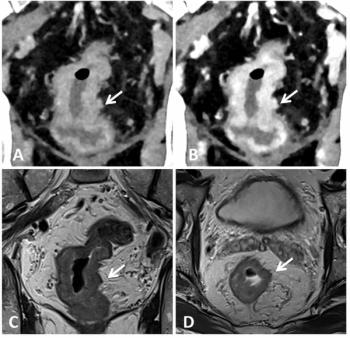
Perfusion MRI predicts malignant transformation of benign brain tumors
Perfusion-weighted MR imaging can anticipate the transformation of low-grade gliomas into malignant tumors up to a year earlier than other imaging tests, according to British researchers. MRI could help determine which patients may benefit more from aggressive treatment.
Perfusion-weighted MR imaging can anticipate the transformation of low-grade gliomas into malignant tumors up to a year earlier than other imaging tests, according to British researchers. MRI could help determine which patients may benefit more from aggressive treatment.
Albeit benign and slow growing, almost all low-grade gliomas turn into malignant brain tumors within years. But the precise stage of that transformation is unpredictable.
Contrast-enhanced MRI has been widely used to monitor tumor progression and to guide treatment. Management remains controversial, however, since many benign gliomas can enhance, while up to a third of malignant high-grade gliomas do not. Additional markers of early malignant changes, such as angiogenesis, could be the answer to the conundrum.
Perfusion MRI could detect the minute anomalies in blood volume and flow that define angiogenesis much earlier than CE-MRI, said study coauthor Adam Waldman, Ph.D., research director for imaging at the Charing Cross Hospital in London.
"Previous studies have shown perfusion useful in grading and predicting glioma behavior. This is the first longitudinal study of perfusion in low-grade gliomas showing changes prior to diagnosis of malignant transformation," Waldman told Diagnostic Imaging.
Waldman and colleagues prospectively enrolled 13 patients with low-grade gliomas from August 2000 until August 2002. Patients underwent perfusion MRI and CE-MRI every six months for up to three years to spot the malignant transformation of their tumors. The investigators found that increases in blood volume by perfusion MR indicative of malignant transformation preceded other markers by a year or longer. They published their findings in the April issue of Radiology.
Perfusion has been proven useful in the initial assessment and follow-up of low-grade gliomas and should be included in clinical protocols, according to Waldman. The technique allows stratification of patients whose tumors will turn to aggressive malignancies in a year or so. In addition, perfusion MRI is automated and time efficient, which can make the whole process less labor intensive.
Seven patients progressed to high-grade malignant gliomas between six and 36 months. Their relative cerebral blood volume (rCBV) increased progressively from 1.94 at study entry to 3.14 12 months prior to transformation, to 3.65 six months prior to transformation, and to 5.36 at the time transformation was diagnosed. The rCBV in the other six patients remained relatively stable, increasing from a mean level of 1.31 at the beginning of the study to 1.52 over the follow-up period.
The rCBV differences observed in both groups were considered statistically significant (p<0.05).
Current management strategies that rely on imaging may prove too costly, ineffective, and dangerous for most patients with the condition, who tend to be young. Perfusion MRI could be a more effective aid in combination with the watch and wait strategies adopted at many institutions, Waldman said.
"([P]erfusion MRI) can help to make decisions about which individual is most likely to benefit from early aggressive treatment, which must be balanced against treatment risk and cost," he said.
For more information from the Diagnostic Imaging archives:
Newsletter
Stay at the forefront of radiology with the Diagnostic Imaging newsletter, delivering the latest news, clinical insights, and imaging advancements for today’s radiologists.



























